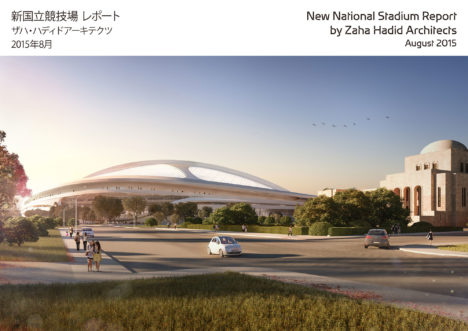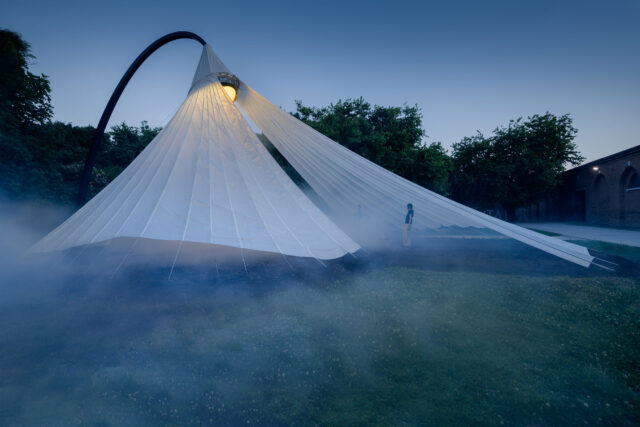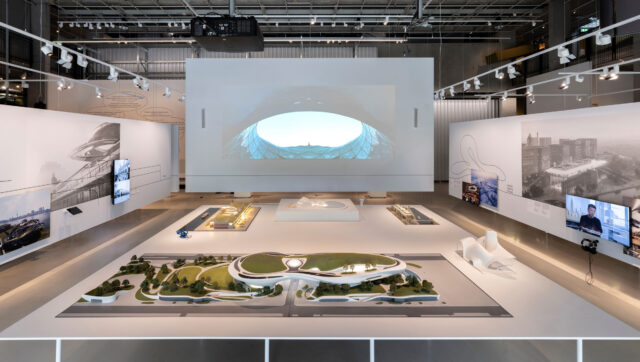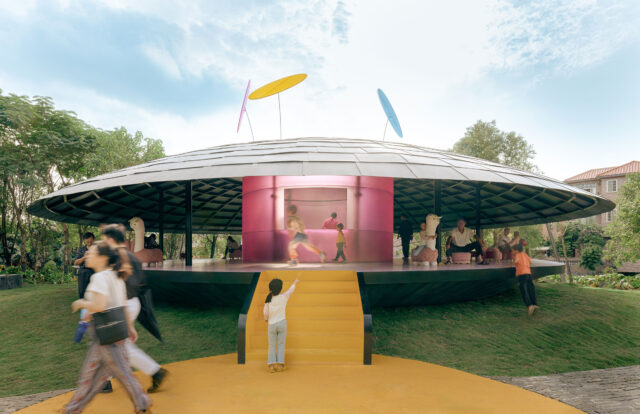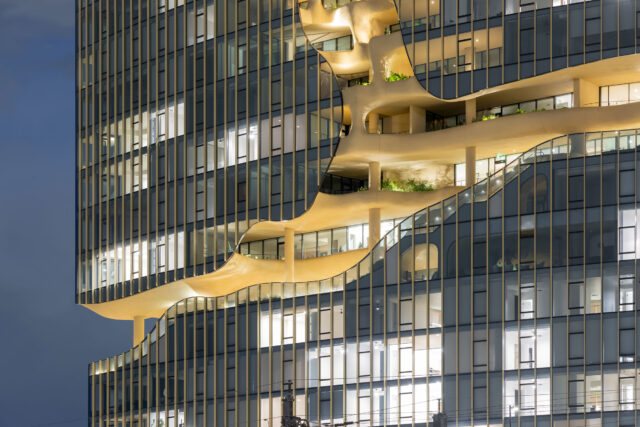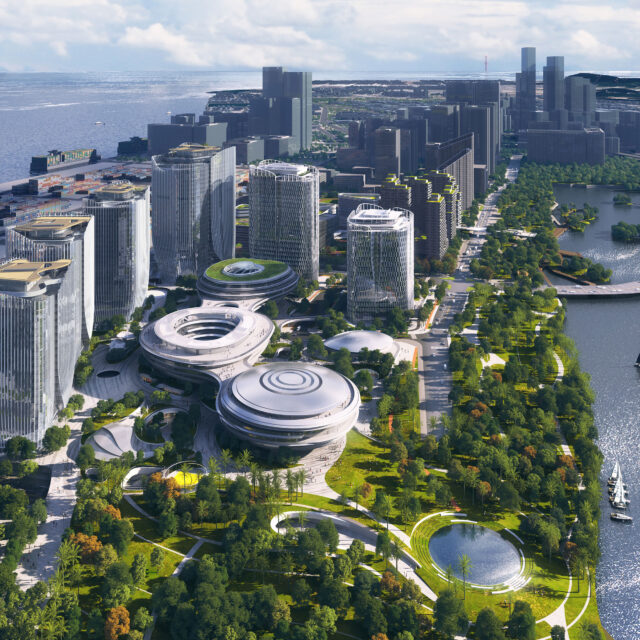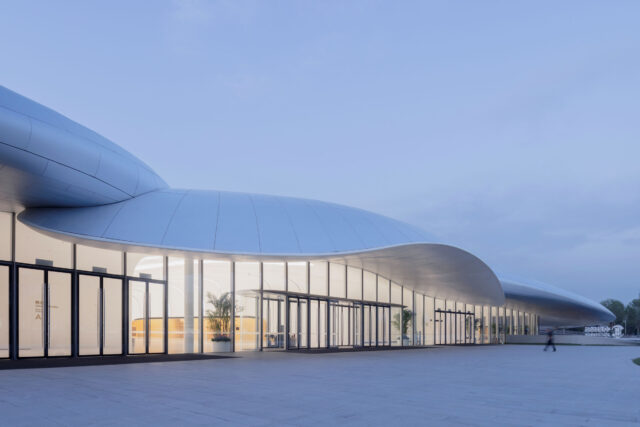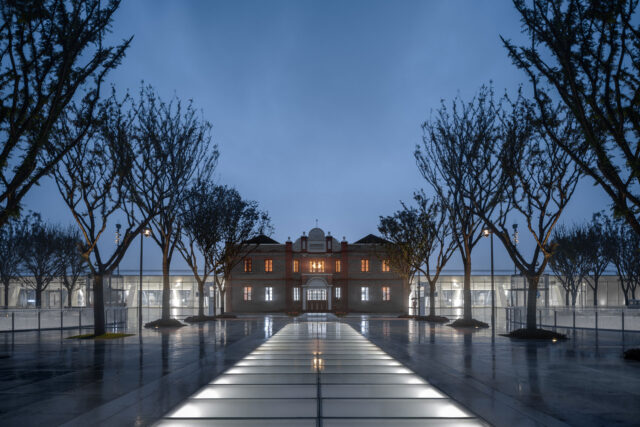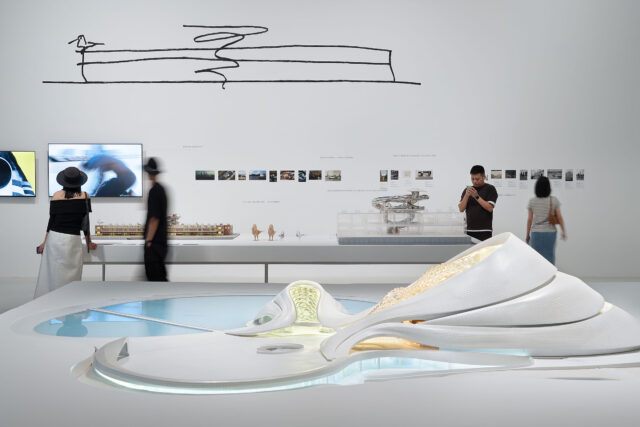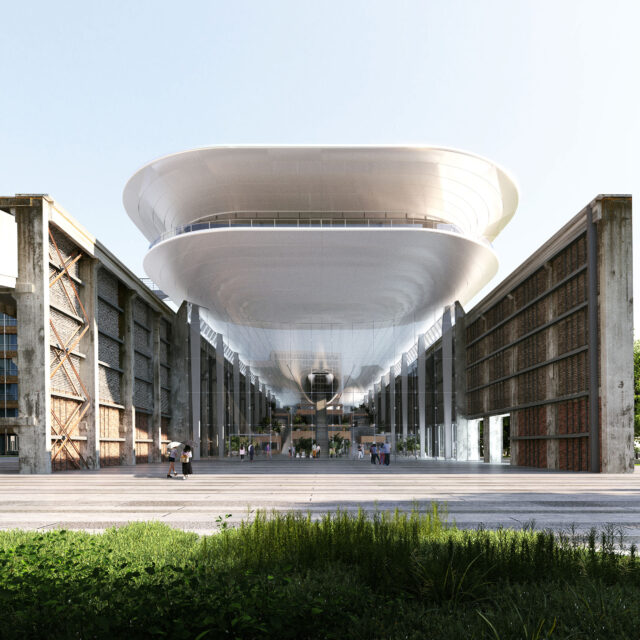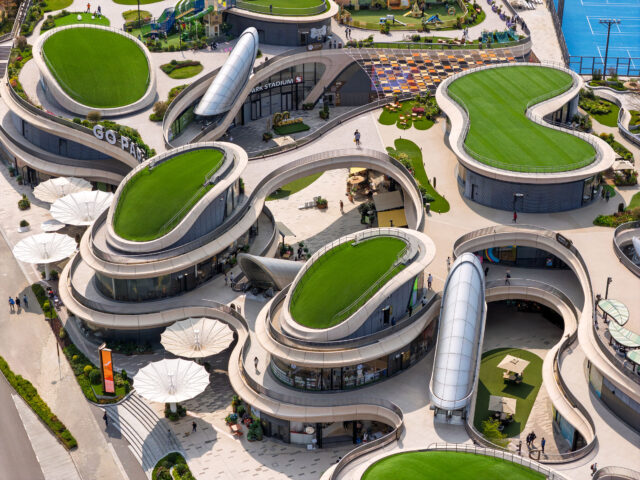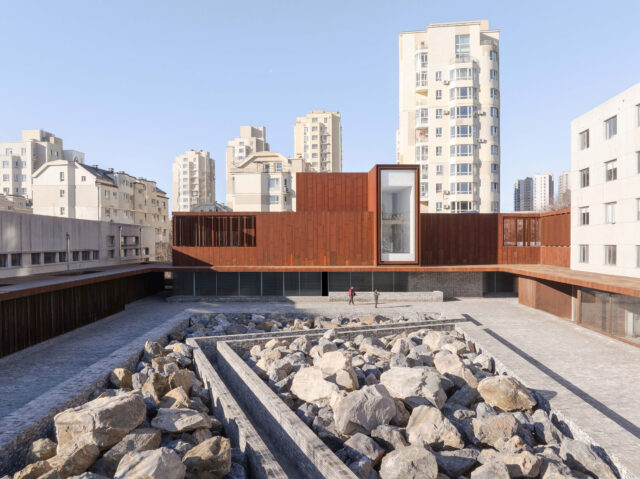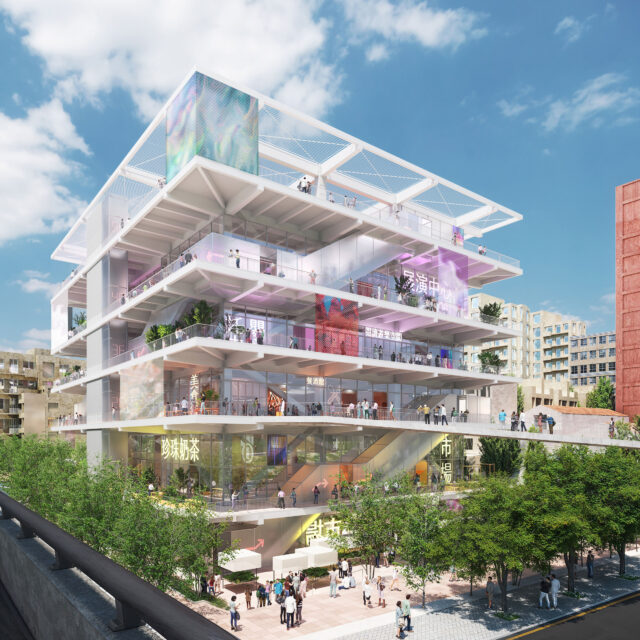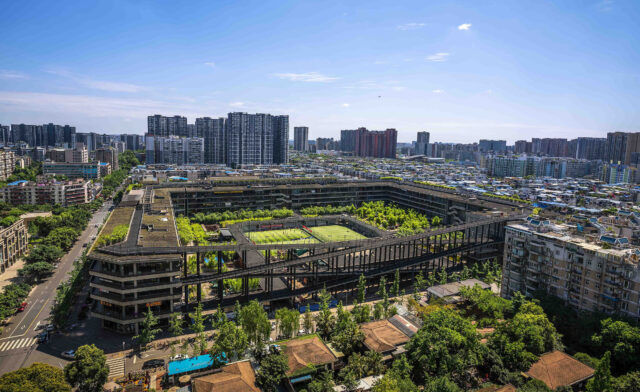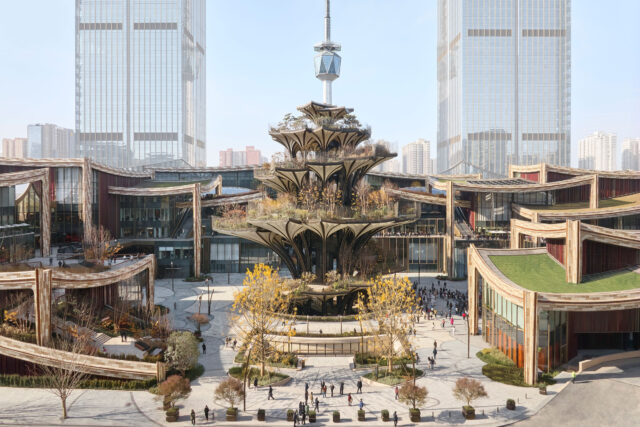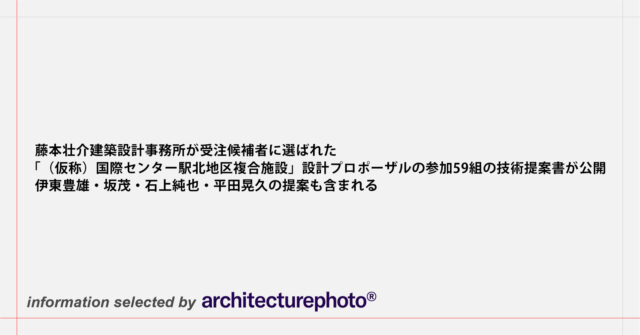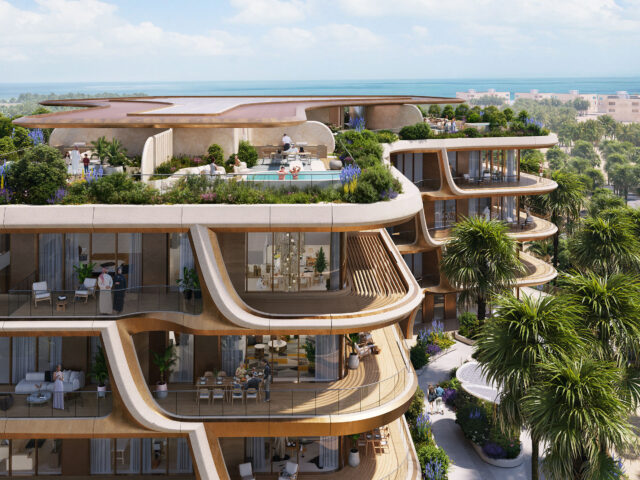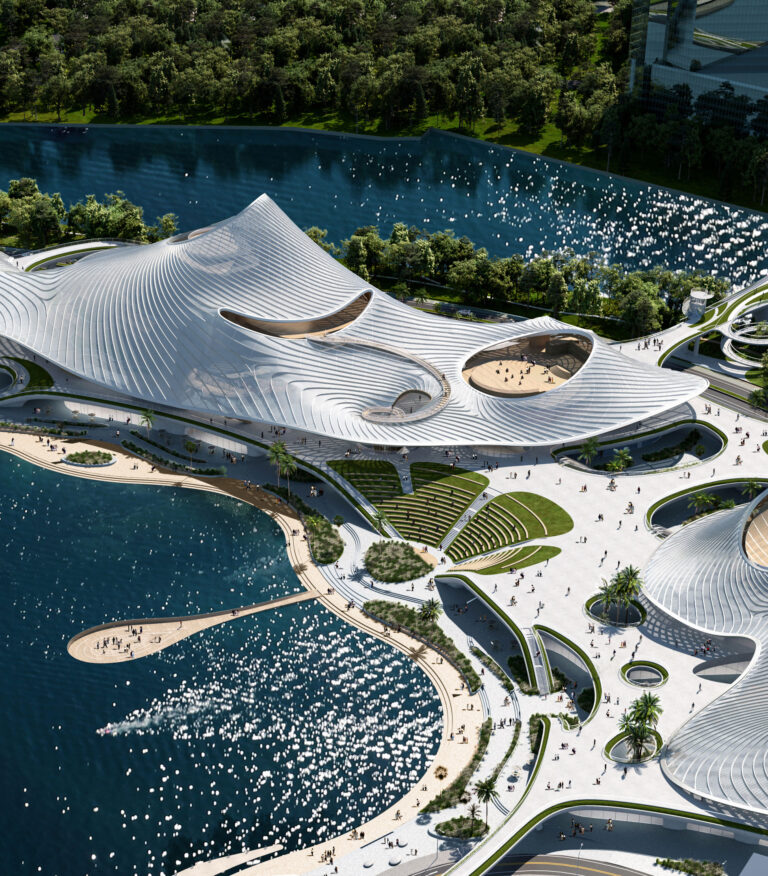
SHARE MADによる、中国・広東省の「南海アートセンター」。湖の畔に計画された約6万㎡の劇場・博物館・運動施設を内包する建築。人が集う地域文化の未来への継承を目指し、最大限の“中間領域”を備えた構成を考案。外観を特徴づける半透明の幕屋根は地域の伝統建築も参照



MADによる、中国・広東省の「南海アートセンター」です。
湖の畔に計画された約6万㎡の劇場・博物館・運動施設を内包する建築です。建築家は、人が集う地域文化の未来への継承を目指し、最大限の“中間領域”を備えた構成を考案しました。また、外観を特徴づける半透明の幕屋根は地域の伝統建築も参照しています。この施設は、2024年に着工して2029年に完成する予定です。
こちらはリリーステキストの翻訳です
MADアーキテクツが南海アートセンターを公開、湖のほとりの穏やかな波紋
MADアーキテクツは、広東省仏山市の南海アートセンターのデザインを発表しました。同センターの総敷地面積は59,445㎡で、グランドシアター、ミュージアム、スポーツセンターの3つの主要機能を含んでいます。完成すれば、広州と佛山の市民に、社会的、創造的、自然的特質を調和させたウォーターフロントの新しい公共ゲートウェイを提供することになります。
この開発は、広州市と佛山市を結ぶ重要な都市である広東・香港・マカオ・グレーターベイエリアの中心、南海文化区に位置しています。MADの創立パートナーであるマー・ヤンソンは、かつて南海アートフィールド(佛山市最大のランドアートフェスティバル)の参加アーティストでした。彼は言います。、
「南海の伝統文化は、龍祭りのボートレースの太鼓の鼓動と船流しにあり、獅子舞のカンフーにあります。それらを見ると、古代から今日に至るまで、ダイナミックな活気と革新的な精神を感じることができます。私たちはそれを現代の暮らしに戻したいのです」
南海アートセンターは連続する水の波のようであり、浮かぶサンキャノピーの下に3つの主要な建物がそびえ立っています。半屋外は、湖の中心的なランドスケープとプログラムを融合させ、地域コミュニティが水辺のランドスケープに没頭できるように誘います。
マー・ヤンソンは説明します。
「南部広東の地域文化は、常に人が集まることにあります。同じライフスタイルを維持するためには、現代の文化施設が貢献しなければなりません。南海アートセンターのデザインは、そのような活動のために最大限の中間領域の空間を提供したいと考えています。また、嶺南(古代の広東地方)の伝統建築の大きな軒からもインスピレーションを得ています」
このデザインは、湖への一貫した視覚的な軸を作ることで、精神的な場を構築することを意図しています。プログラムは中心軸の両側に計画されています。グランドシアターとミュージアムの延べ床面積は、中心軸をの片側で約89,269㎡あり、そのうちグランドシアターには1,500席の円形劇場と600席の多目的ホールがあり、さまざまな公演や会議に利用できます。また、ミュージアムは完成後、国家レベルのミュージアムの基準を満たすことになります。
スポーツセンターは敷地の反対側にあり、総床面積は約32,006㎡で、スイミングプール、バスケットボールコート、バドミントンコートなどの各種スポーツスペースや施設があります。
透過性のあるファサードは、自然が敷地内を流れて都市に戻ることを可能にしています。2階建てのランドスケープ・プラットフォームは外側に広がり、中央の湖、川沿いの公園、都市空間を有機的に結びつけ、自然と建築の間の調和を実現しています。
商業スペースは湖に沿って配置され、湖岸のランドスケープ帯に建築的なテクスチャーを放射状に広げています。文化的なスペースは点在されています。2階の展望プラットフォームと屋外のパティオは、3つの主要な機能をつなぎ、さらにその下の商業施設や飲食店スペースと連携して、訪問者の体験と回遊性を完成させます。プラットホームの上部は、文化スペースのエントランスにつながる歩行者スペースとなっています。
サステイナビリティとグリーンカーボン削減は、当初から設計コンセプトに完全に組み込まれており、建築技術とイノベーションの物語を形成しています。半透明の白いETFE膜構造の屋根の下で、南海アートセンターは、太陽光発電、雨水収集、垂直緑化システムなど、省エネで環境に優しい技術を取り入れています。
南海アートセンターは2024年に着工し、2029年に完成する予定です。
以下の写真はクリックで拡大します
































以下、建築家によるテキストです。
MAD Architects Unveils Nanhai Art Center, A Gentle Ripple by the Lake
MAD Architects unveiled the design for the Nanhai Art Center in Foshan City, Guangdong, which covers a total site area of 59,445 square meters and includes three major functions: the Grand Theatre, the Museum, and the Sports Center. When completed, it will provide the citizens of Guangzhou and Foshan with a new public gateway on the waterfront, harmonizing social, creative, and natural attributes.
The development is located in Nanhai Cultural District, the heart of the Guangdong-Hongkong-Macao Greater Bay Area, an important urban site that bridges the cities of Guangzhou and Foshan. Ma Yansong, the founding partner of MAD was once a participating artist in the Nanhai Art Field (the biggest land art festival in Foshan City), he said,
“The traditional culture of Nanhai, is in the drum beat and boat drift during the dragon festival boat race and in the kung-fu in the lion dance. Watching them, you can feel the dynamic vibrant and innovative spirit from ancient times till today. We want to bring it back to modern living here.”
The Nanhai Art Center resembles a continuous wave of water, with three main buildings looming underneath the floating sun canopy. The semi-outdoor merges the central landscape of the lake with the programs, inviting the local communities to immerse themselves in the waterfront landscape.
“The local culture of Southern Guangdong is always about the gathering of people. To keep the same lifestyle, it has to be contributed by the contemporary cultural venues. The design of the Nanhai Art Center wants to provide the maximum grey spaces for such activities. It is also inspired by the large eaves of the traditional architecture of Lingnan (ancient broader Guangdong area). “. Ma Yansong explains.
The design intends to build a spiritual field by creating a coherent visual axis to the lake. The programs are planned on both sides of the central axis. The total floor area of the Grand Theater and the Museum is about 89,269 square meters on one side of the central axis, of which the Grand Theater includes a 1,500-seat amphitheater and a 600-seat multi-purpose hall, for a variety of performances and conferences; the Museum will meet the standards of a national-level museum upon completion.
The Sports Center is located on the other side of the site, with a gross floor area of about 32,006 square meters containing swimming pools, basketball courts, badminton courts, and other types of sports spaces and facilities.
The permeable facades allow nature to flow through the site back to the city. The two-story landscape platform extends outward, organically linking the central lake, riverfront park and urban space, achieving a harmonious balance between nature and architecture.
Commercial spaces are placed along the lake, radiating architectural texture to the lakeshore landscape belt. Cultural spaces are interspersed. The second-floor viewing platforms and outdoor patios connect three main functions together, also with the commercial and F&B space below to complete the visitor experiences and loop circulation. The top of the platform serves as a pedestrian space leading to the cultural spaces entrances.
Sustainability and green carbon reduction are fully integrated into the design concept from the start and form a narrative of building technology and innovation. Under the translucent white ETFE membrane structure roof, the Nanhai Arts Center incorporates energy-saving and environmentally friendly technologies, including photovoltaic power generation, rainwater collection, and vertical greening systems.
Construction of the Nanhai Arts Center is scheduled to begin in 2024 and to be completed in 2029.
■建築概要
Nanhai Art Center
Foshan, China
2022-2029
───
Type: Cultural Facility – Theater, Museum, Sports Center, Commercial
Site Area: Approx. 59,455 sqm
Building Area: Approx. 121,275 sqm
───
Principal Partners in Charge: Ma Yansong, Dang Qun, Yosuke Hayano
Associate Partners in Charge: Kin Li, Liu Huiying
Design Team: Li Cunhao, Zhang Ying, Yoshio Fukumori, Rozita Kashirtseva, Hao Ming, Orion Campos, Zhang Lipei, Gao Chang, Zeng Tianxing, Li Yuchen, Ma Ran, Hemant Jindal, Jiang Yunyao, Zhou Rui, Ma Yiran, Zhang Tong, Peng Wanjing
───
Client: Foshan Nanhai Youwei Baiyue Culture Co.
Contractor: Foshan Nanhai Liyayuan Real Estate Development Limited Company
Executive Architects: Tongji Architectural Design (Group) Co., Ltd.
Landscape Consultant: Earthasia (Shanghai) Co., Ltd.
Lighting Consultant: Ning Field Lighting Design Corp., Ltd.
Stage Craft Consultant: China Institute of Arts Science & Technology

